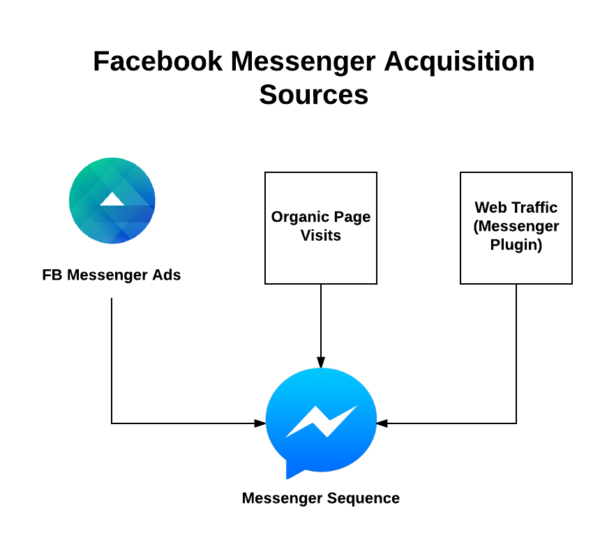One of digital marketing’s prime dictums is that email is king. I’ve previously written on the merits of email as a lead generation channel for businesses. However, there is a new sheriff in town, and that would be the rise of messenger chat bots. Messenger bot campaigns already provide marketers an excellent ROI, as you can see in the example video below by fellow growth hacker Justin Wu:
Whereas traditional marketing funnels flow from channel to landing page, and onto sign-up forms and/or checkout carts, chatbots can eliminate at least several of these steps thanks to Facebook. In science fiction, this space-folding phenomenon is often called a tesseract, and it makes for good analogy for how bots will change messenger marketing.
History of Instant Messaging
Let’s go back in time. While email has been around for a few decades, instant messaging (IM) is what helped the pre-social web gain popularity in the 1990s. Online chat rooms, IRC channels, ICQ/AIM/MSN, etc. were some of the first ones. One could even argue that the IM ecosystem paved the way for Social Media. SMS, or text messaging, started to become common as society transitioned from landline to mobile phones.
Now fast forward to around mid-2000s, you have the early days of the social web, keypad mobile phones (soon to be smart phones), and already existing IM clients. Users could usually reach almost anyone by text nearly instantaneously (depending on how quickly others adopted new technologies).
Here in the present day, we have billions of social media users and smart mobile devices with at least some form of internet connectivity, depending on the region. How do they communicate with each other? Phone calls? Carrier text messages? Emails? Those three traditional communication channels still hold solid ground, and aren’t going away anytime soon.
Realize, however, that the rise of mobile web and applications means that previous activities, such as instant messaging, that were previously confined to the desktop, are now mobile.
Enter: SMS
Texting (SMS) and IM’ing aren’t that different mechanically – what differentiates them however, is the underlying platform that serves the message: numerical phone numbers or user accounts on a social network. Applications like Skype and Whatsapp effectively eliminate the friction that comes with contacting phones abroad.
If you know that your audience is active on mobile devices, or if you’ve already acquired a database of mobile phone numbers, then perhaps an SMS bot could work for you. You could even configure it to send them directly to your page’s Messenger sequence. There are enough SMS vendors that offer compatibility & integration with either API’s or directly with your CRM (via Salesforce’s Appexchange).
Facebook Messenger
Facebook Messenger bots offer the instant delivery that SMS provides, and much more. From rich media (images & videos) to button menus, the sequencing possibilities are endless. This flexibility allows marketers to utilize chatbots across multiple industries, from restaurants to e-Commerce, and even for B2B Lead Generation.

As per the above diagram, one the main sources for new subscribers, outside of your existing organic channels would be through Facebook Messenger ads. They don’t require users to leave Facebook, which can be advantageous for brands with strong social presence.
Why Bots Matter for Businesses
Modern consumers now expect instant communication and transaction in their daily lives, when interacting with businesses. This could mean customer service, which has shifted to public social channels, or transactions themselves. Mobile wallet applications are enabling merchants & customers to exchange goods without cash or even cards in some cases; requiring only a mobile device. This trend is quite common in Mainland China with WeChat.
You can also incorporate email into your messenger campaigns and vice versa:
Doing this will be key for keeping up with new CRM records. There are a few restrictions on what messages you can send to subscribers and the timing of messages on Facebook, as opposed to the mostly laissez-faire nature of email.
Conclusion
We already know how attached mobile users are to messaging apps in general, so it makes sense to take advantage of that trend. Be cognisant of how users prefer to engage with brands on new media. Don’t make the mistake of being too spammy or aggressive. Follow the rules of the respective platforms and use an inbound approach as you build-up a subscriber list. Take advantage of artificial intelligence to reduce the amount of work needed by humans in the process.